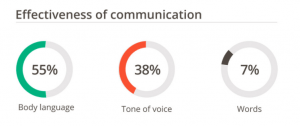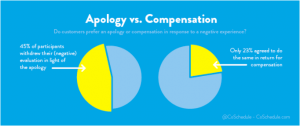A Guide to Appeasing Angry Customers
It is a normal day at the office when all of a sudden you get an angry message from a customer. You know right away that if you don’t handle the situation correctly not only will you lose the customer, but you will also risk them ranting about their experience online.
What do you do in a situation like this? What is the best way to calm down your customer to convince them not to cancel their services with you and not to vent their frustrations publicly?
Everyone who works on the frontline of a business has had to deal with angry customers. The experience is always unpleasant and stress-inducing. There is a lot of information online on what you should do in order to attract customers and retain them.
Experts will tell you that the process of converting an ordinary customer into a loyal one is one of the most challenging aspects of running a business. While gaining customer loyalty is tricky, trying to win back a customer that you have lost is even harder.
Every business has its ups and downs and entrepreneurs of all levels have had their fair share of bad customer experiences. When you are dealing with such a large variety of people, you are bound to run into individuals who have a problem with how you do things. You might not be able to meet their expectations, you might have made a mistake, or you might have simply run into a troublesome customer who is having a bad day.
One of the most common reasons for a customer to become angry or dissatisfied is because they see aspects of your products/services in a way that you do not.
According to this article by Jeff Toister , the perspective of your customer will never completely match with your own. You may simply be unaware of certain elements of your product that might dissatisfy your customers.
Regardless of why you get on a customer’s bad side, an angry customer can translate into a number of things: you might permanently lose a client, the client may tell their friends and acquaintances about their negative experience, and in extreme situations they may even write negative reviews about you online or share their experience on social media.
An angry customer is always bad news. But the worst thing that you can do (though it may be tempting) is to do nothing. If you ignore them or abandon them, they won’t want to work with you in the future, and they may seek a different audience to hear them out.
This guide is going to discuss different methods and tactics that you can use to deal with an angry customer effectively. Your goal is to try and win that customer back, or, worst case scenario, part with them on good terms.
A note on B2C vs. B2B customer service–though the lessons in this guide are more relevant to dealing with unhappy consumers than unhappy business customers, if you’re in a B2B industry, remember: at the heart of it, you’re still working with individual people who are under a lot of pressure at their own jobs. You may find these steps useful to handle problems with your POC, should any arise!
Step 1: Remain Professional
We have all heard the saying “the customer is always right.” It can feel unfair to employees who have to deal with unsavory customers, especially if it’s not their fault and they don’t have the power to change the situation. But don’t take these words of wisdom in a literal sense.
The concept behind this saying is that you should always have a positive attitude towards customers, regardless of how they interact with you. If you have a customer screaming and swearing at you, instead of responding to them in the same fashion, you should remain calm and amiable. This article by Forbes explains that remaining calm while interacting with an angry customer will help calm your customer as well and will give you control over the situation.
One of the key characteristics of any good customer service rep is patience. Make your customer feel that you care about what they have to say. A great way to deal with an angry customer is to try and put yourself in their shoes. Imagine how you would feel if you were in the same situation. Once you are able to empathize with the customer’s feelings, you will be able to respond in a manner that can help calm the customer down, even if you can’t fix the situation right away.
Empathy can really take you a long way. In a piece in Gallup Business Journal, William J. McEwen discusses the value of empathy and better support over support that is simply faster. Empathic support can be three times more effective at making customers happy and retaining their business than support that is fast and responsive.
In circumstances where professionalism is being challenged by the customer, remaining calm becomes more important than ever. If they are shouting, a classic strategy is to get slightly quieter when they get louder. This can work with an unhappy customer in person, at a call center, or in many other customer support situations. This works for several reasons.
First, if there are other customers around, it makes you appear extremely reasonable. Most people are rather uncomfortable with shouting matches, and refusing to engage can help the environment from escalating. This can also demonstrate a level of understanding to other customers, to prevent a risk of seeming unprofessional to them.
The second reason this strategy can be effective is by how off-putting it can be to the shouter. When a person is angry, often time they are actively seeking the conflict, to raise tension, as validation as their aggression. Simply put, no one likes feeling like the bad guy, and if they are the only one shouting, as you get quieter, this can happen. They may even feel a little ridiculous.
Taking a slight pause before answering can add to this strategy as well. These are extremely effective ways a customer service representative can interrupt negative energy and aggression, all while elevating their own professionalism. Do not fight the customer, but use the nature of argumentation to de-escalate situations. Only once the shouting has stopped can the progress being.
Step 2: Begin Wooing The Customer
Getting the customer to calm down is only the start. Allow them to vent their frustrations to you and show the customer that they are not wasting their time complaining to you. Listening to your customer’s problems is only one part of the solution that you need to provide. No matter how good your listening is, it does not matter if the customer does not feel as though you are listening to them.
After the situation has calmed down, begin by repeating everything that the customer told you to establish that you were, in fact, listening to them. At this point, aggressive cusomters may even be looking for a social out of the negativity they brought. Perhaps they shouted, you were calm, and they felt silly for shouting. Now, they are calmer. In effect, you have “won” the first part of what they view as a fight. People do not like to lose. In order to move on, it is important to give them a way to feel as though they have won as well, and this comes through validation.
Provide them with a summarization of their complaints and then proceed by asking further questions. Asking the customer to further elaborate their problem lets you hit two birds with one stone. A strong customer service team member will use positive words and affirmations to make their concerns seem reasonable, yet solvable.
First, you get more details on what led to the customer becoming upset in the first place. Criticism and feedback can really help you improve your processes and make sure that the same problem does not occur in the future.
Second, the customer will begin to feel that you are genuinely concerned and wish to provide them with a solution. Once you have made your customer feel like you care, they might be inclined to hear you out and provide you with a second chance to make things right.
Crucially, it is important to not play a blame game. This isn’t a debate, and you are not trying to “win”. Instead of shifting blame away from yourself or your coworkers, the aim is to align yourself with the customer. It is not Them Vs. You, but both of you are against the problem. People are much more inclined to give their teammates the benefit of the doubt, so if you can foster this relationship, it will help both of you interact with each other.
While handling a dissatisfied customer face to face, you should also be careful about your body language. When we humans communicate with one another, we converse not only verbally, but non-verbally as well through gestures, facial expressions, our posture, and more.

According to this infographic, during a conversation; our words only contribute a measly 7% to the effectiveness of our communication, while our body language makes up 55% of the message conveyed. Tone of voice is also quite important, contributing 38% of what you communicate to your listener.
A stooped posture and crossing your arms across your chest makes you look defensive, which can result in the customer becoming more aggressive. Instead, stand straight up and keep your arms relaxed by your side. Maintain direct eye contact with a calm and amiable expression. The tone of your voice should be firm yet friendly and you should constantly keep in mind that you are not trying to fight with the customer–rather, you are trying to help them out.
The best way to handle an upset customer is to do it face to face. However, if you cannot meet your customer face to face, then you should be extra careful with your tone and choose your words carefully while you address them over the phone.
Step 3: Apologize & Begin Proposing a Solution
Once you have managed to soothe your customer and you have convinced them that you are willing to help, you should begin providing your customer with a solution to their problem.
Now is the time to establish that you accept that you (or your company) were at fault, even if you were not technically wrong in the first place. While this would be unwise early in this interaction, as it can draw social battle lines, at this point you have defused enough to accept blame without it generating anger.
This might sound a bit frustrating and it often is, but if you want to make sure that the customer stays with you, you need to apologize. Biting the bullet becomes necessary at times. It might feel infuriating but it is one of the surest ways to win back your customer.
Why is this different? Before a customer is calm, accepting blame and offering solutions can feel like you are defending yourself personally, or your company. You have worked hard now to establish your willingness to solve the problem. This puts you on the same side as the customer, instead of someone trying to justify their actions and mistakes. Accepting some responsibility also shows your ability to solve the issue.
A monetary compensation provided to a customer in order to patch things up becomes twice as effective (up to 74%) at satisfying the customer when an apology is added into the mix. The apology does not need to be elaborate or detailed, a simple “we are sorry for the inconvenience” is all that is needed most of the time to put your customer at ease.

Once you have made an apology, begin proposing a solution to the problem. Before you start discussing ways to fix the problem, you should ask the customer what they feel would be a satisfactory solution. Doing this will make the customer feel more involved in the process and it will also give you an idea of what it will take to appease the customer.
At this point you should convey any relevant policies that your business might have in order to make sure that the customer is in the loop about everything.
Once you have determined the customer’s level of expectation, you should provide them with a realistic solution that does not demand too much from you. Being able to give your customer a prompt answer usually works wonders. It shows that you want to make an effort to right your wrongs and that the customer’s needs are something you really do care about.
Once you have provided the customer with a satisfactory solution, see them off with a smile, and let them know that you are grateful for the trust they place in you.
Step 4: Wrap Things Up
Now that you have successfully dealt with a potential customer defection, you should pat yourself on the back and take a timeout. Give yourself a moment to release all the stress that you had built up while dealing with the customer. Customer service is very stressful as it often puts you on the spot, so you should make sure to take lots of deep breaths and vent out your stress every now and then with colleagues or your manager.
Also, every bad experience with a customer should be taken as a valuable lesson. When a customer is upset, it means that there is something in your business that is not up to the mark. Learning from such experiences will give you the chance to highlight flaws and hopefully fix them, or at least feel prepared to deal with the problem smoothly next time.
Your most troublesome customers should be your benchmark. Work towards refining processes to an extent where you are able to satisfy even your pickiest customers.
What If The Customer Does Not Budge?
There is no guarantee that you will be able to appease every upset customer by listening to them and apologizing to them, some people simply are not ready to trust you once they feel like they have been wronged.
If a customer is not ready to reason with you or sort things out, and it has become certain that you cannot win them back then you should start working on tying up any loose ends. A customer that is angry at you should never be left hanging. Even if it’s certain that you will not be able to retain them, you should still make an effort to end things on a good note. This can be done by expressing your regret about not being able to meet their expectations., an email of apology as a followup to your conversation can go a long way.
If the customer is especially valuable then you can even send them a gift basket or simply a letter of apology to win back their trust, even if not their business.
This will reduce the amount of hostility or resentment that they might harbor for you. It might seem wasteful to focus on a person who is no longer interested in what you are offering, but this extra effort can save you from more angry phone calls in the future or bad reviews posted online in the head of the moment.
See reviews for Customer Experience Management Software here.
For those looking to learn more, check out this video on dealing with angry customers.
Was this helpful?

